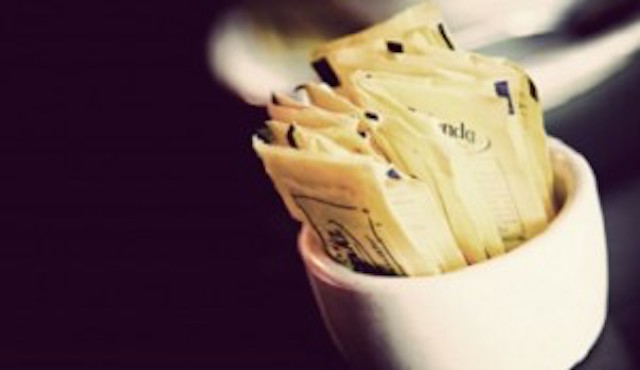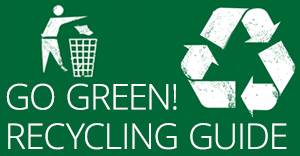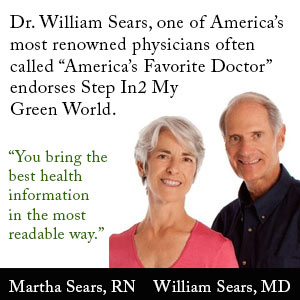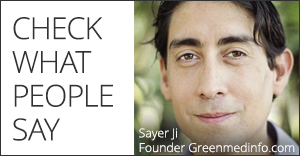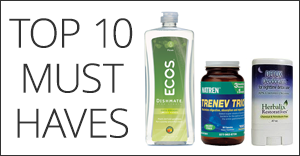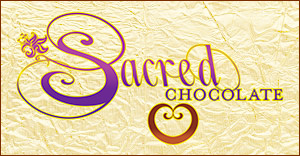There has been so much controversy surrounding artificial sweeteners and Splenda is no exception. So we have what done some research and have gathered what you need to know about Splenda.
What are the dangers of Splenda?
Its slogan “Made from sugar, so it tastes like sugar has changed” after the company was sued and became: “Just What’s Good — it’s made from sugar. It tastes like sugar. But it’s not sugar.”
Sucralose (Splenda) was approved for use in foods as a sweetener in 1998
New York University professor of nutrition, food studies and public health Marion Nestle regularly addresses artificial sweeteners on her widely read Food Politics blog.
When asked about Splenda, she tells TakePart, “Splenda is and always will be a non-starter for me. One of my top food rules is never to eat anything artificial. If you eat real food, you don’t have to give a thought to whether Splenda is good, bad or indifferent. It’s simply off the table, where I think it should be.”
” THERE’S NO DOUBT about it. Artificial sweeteners cause obesity,” states Dr. Ralph Hyman.
“Stop confusing your body. If you have a desire for something sweet, have a little sugar, but stay away from “fake” foods. My advice is to give up stevia, aspartame, sucralose, sugar alcohols like xylitol and malitol, and all of the other heavily used and marketed sweeteners unless you want to slow down your metabolism, gain weight, and become an addict,” Dr Hyman adds.
Consumer watchdog group Center for Science in the Public Interest (CSPI) has downgraded sucralose (known as Splenda) from a “safe” rating to “caution” in its Chemical Cuisine guide after an Italian laboratory found the sweetener caused leukemia in mice.
“Sucralose may prove to be safer than saccharin, aspartame, and acesulfame potassium, but the forthcoming Italian study warrants careful scrutiny before we can be confident that the sweetener is safe for use in food,” said CSPI executive director Michael F. Jacobson in a statement.
“It’s a chlorinated artificial sweetener in line with aspartame and saccharin, with detrimental health effects to match,” explains Dr. Joseph Mercola.
Some reported symptoms after eating sucralose.
Seizures
Dizziness
Migraines
Allergic reactions
Weight gain and increases in blood sugar
Gastrointestinal issues
Obesity
Artificial sweeteners are not good for you and YOU should opt for a healthier option such as coconut nectar or Raw honey.
What is sucralose really?
Splenda contains 95% dextrose (D-glucose) and maltodextrin combined with a small amount of sucralose.
Sucralose is made by replacing three select hydrogen-oxygen groups on sucrose (table sugar) molecules with three chlorine atoms.
The truth is that sucralose does start off as sugar, but it is what happens after that seems to be the concern. In the factory, three chlorine molecules are added to the sugar molecule to make sucralose. This alters the chemical structure of the sugar, making it a molecule that does not exist in nature. Because it doesn’t exist in nature, the body may not metabolize or digest this molecule.
According to experts, if our bodies were able to metabolize it, then sucralose would no longer have zero calories.
Some people absorb more sucralose in their bodies than others, as we all have a unique biochemical make-up.
“If you feel that Splenda affects you adversely, it is valid. Don’t let someone convince you that it is all in your head. You know your body better than anyone else,” adds Mercola.
How can you tell if an artificial sweetener may harm you?
Eliminate the sucralose or artificial sweetener(s) from your diet for 1-2 weeks.
After this period, reintroduce it into your diet in sufficient quantity.
Avoid all other artificial sweeteners on this day, so you can differentiate which one is harming you.
Do this for 3 days, paying close attention to how you feel with the sweeteners and without.
As with everything we recommend caution. It is better to be safe than sorry.You be your own judge and do what is right for YOU!
Note: None of the information in our website is intended to diagnose, treat, cure or prevent any illness or disease. The content on our website is for educational purposes only.
DON’T FORGET to sign up for our weekly newsletter to get our latest articles, updates, free recipes and giveaways.
For a list of products containing sucralose.
For the health risks of aspartame.
New MRI technique confirms that cancer feeds on sugar.
REFERENCES:
1. CSPI Downgrades Splenda From “Safe” to “Caution” ~ Newsroom ~ News from CSPI ~ Center for Science in the Public Interest.” CSPI. N.p., n.d. Web. 23 Jan. 2014.
2. Mercola, Joseph, D.O. “The Potential Dangers of Sucralose (Splenda).” Mercola.com. Mercola.com, 03 Dec. 2000. Web. 13 Jan. 2014.
3. Mercola, Joseph, DO. “Sucralose (Splenda?) U.S. Product List.” Mercola.com. Dr. Joseph Mercola, n.d. Web. 13 Jan. 2014.
4. “A Role for Sweet Taste: Calorie Predictive Relations in Energy Regulation by Rats.“National Center for Biotechnology Information. U.S. National Library of Medicine, n.d. Web. 23 Jan. 2014.
5. ” Splenda May Not Be So Splendid After All.” TakePart. N.p., n.d. Web. 23 Jan. 2014.
6. “Diet Drinks: Helpful or Harmful to Kick the Sugar Habit?” Dr Mark Hyman. N.p., n.d. Web. 23 Jan. 2014.
7. Nestle, Marion. “New Studies on Artificial Sweeteners: A Puzzle.” Food Politics. N.p., n.d. Web. 23 Jan. 2014.
8. Nestle, Marion. “The Latest Splenda Rat Study: Oops.” Food Politics. N.p., n.d. Web. 23 Jan. 2014.
9. Medical News Today. “How safe is splenda“. Web. 23 Jan.2014

